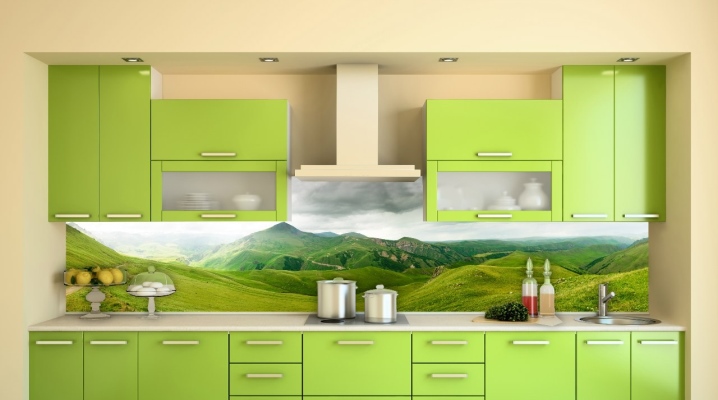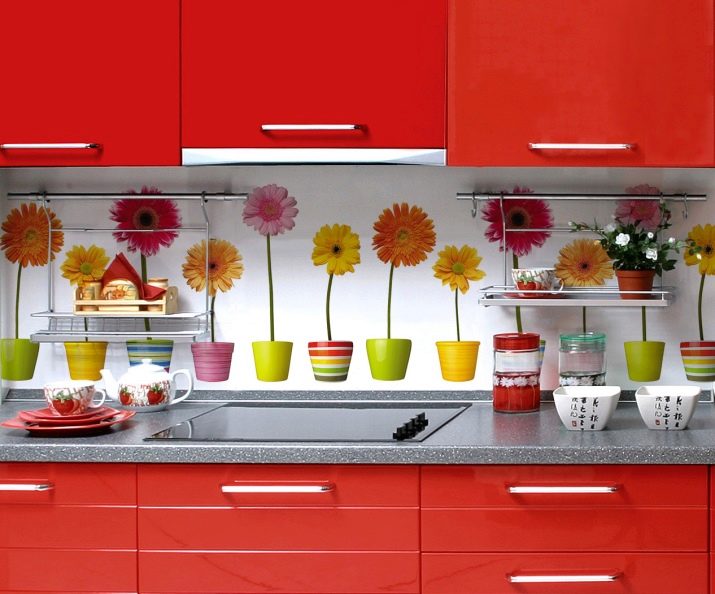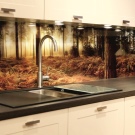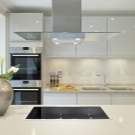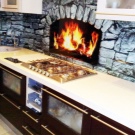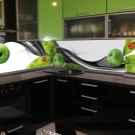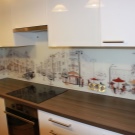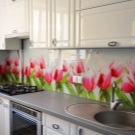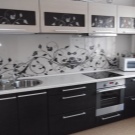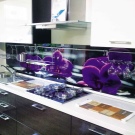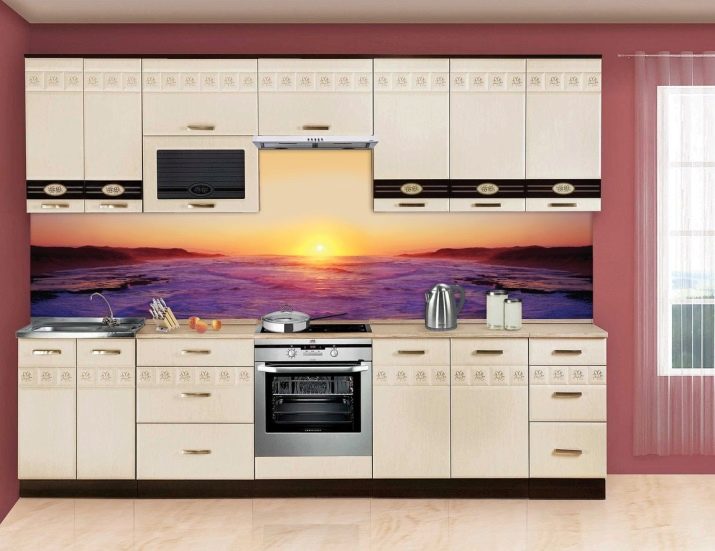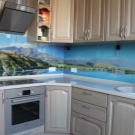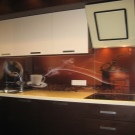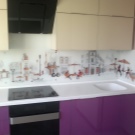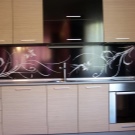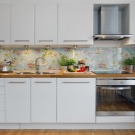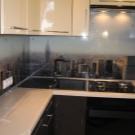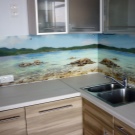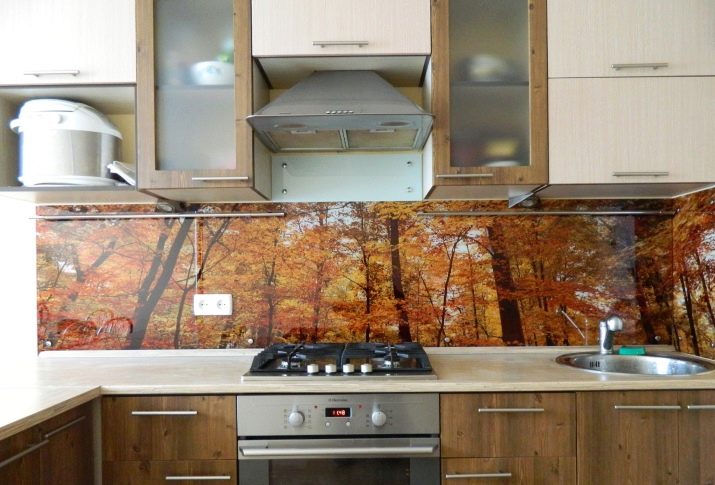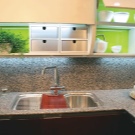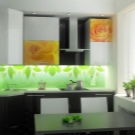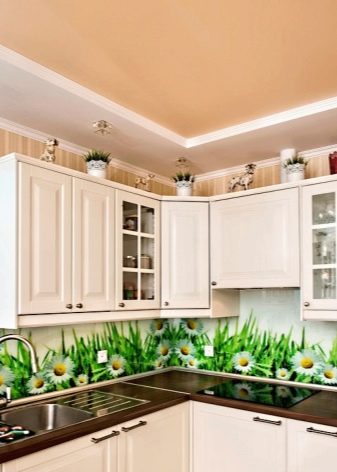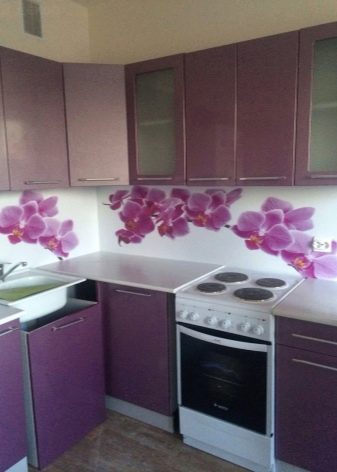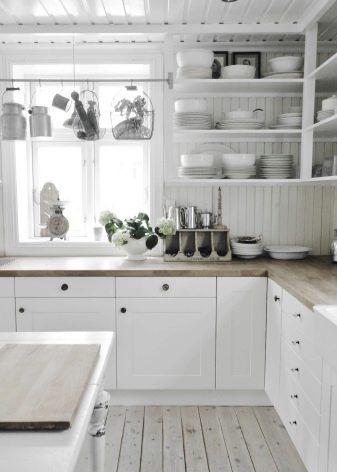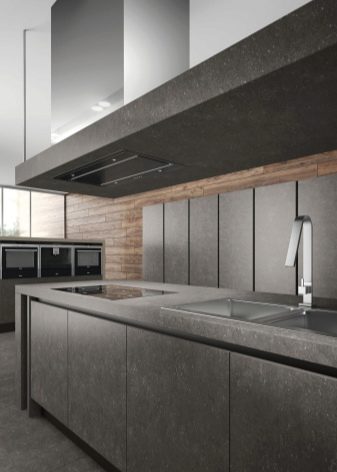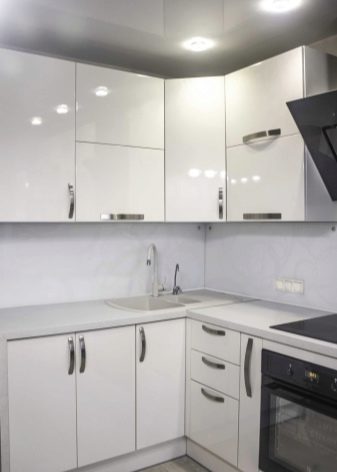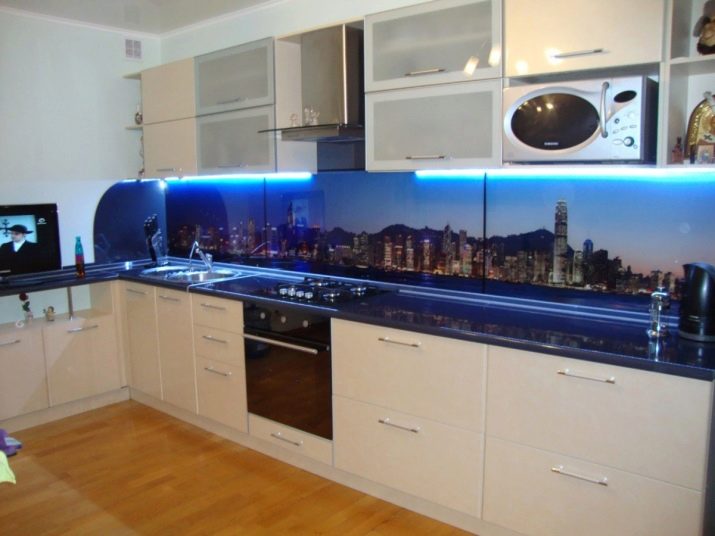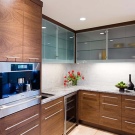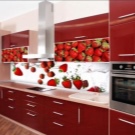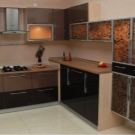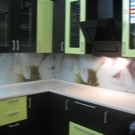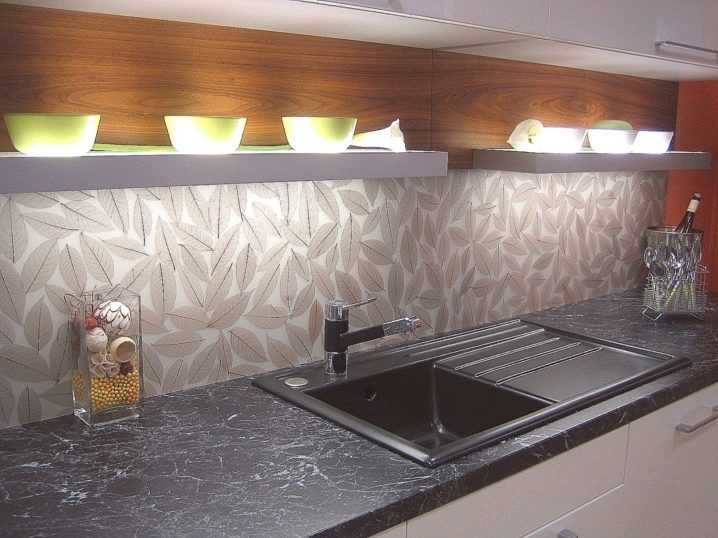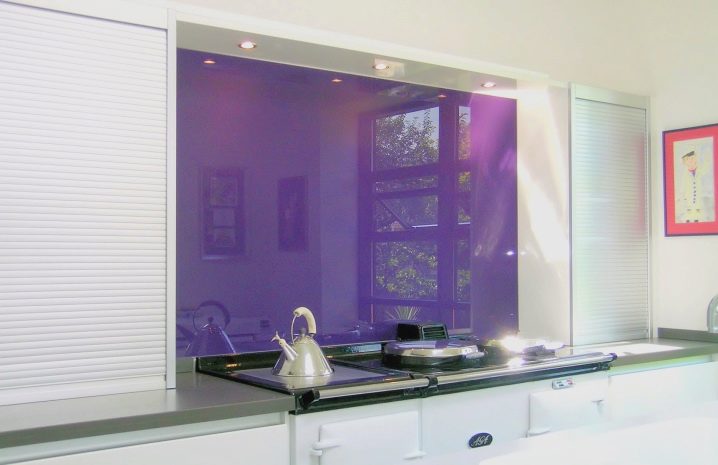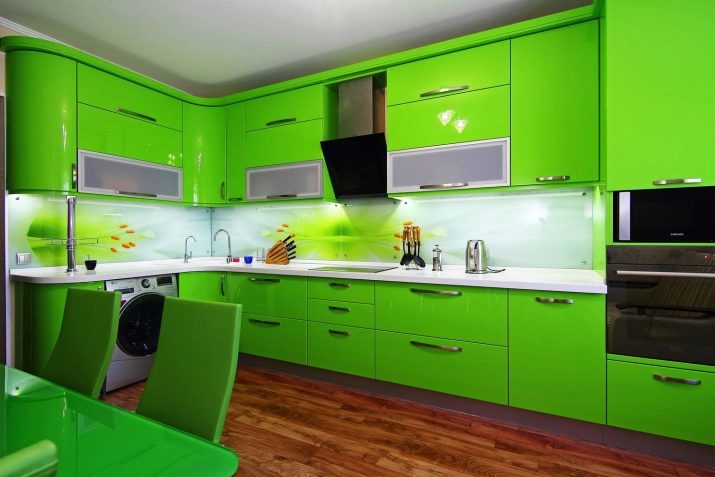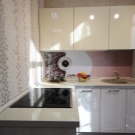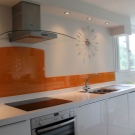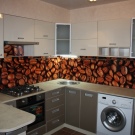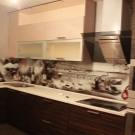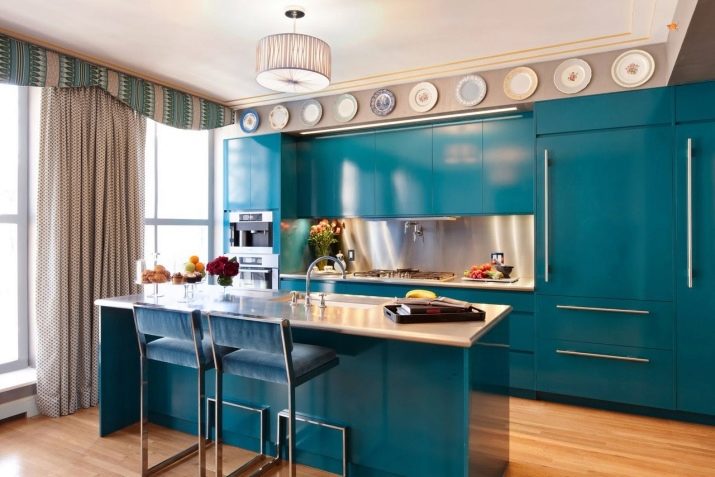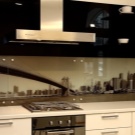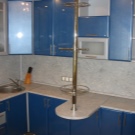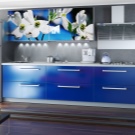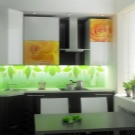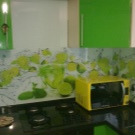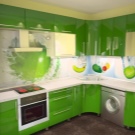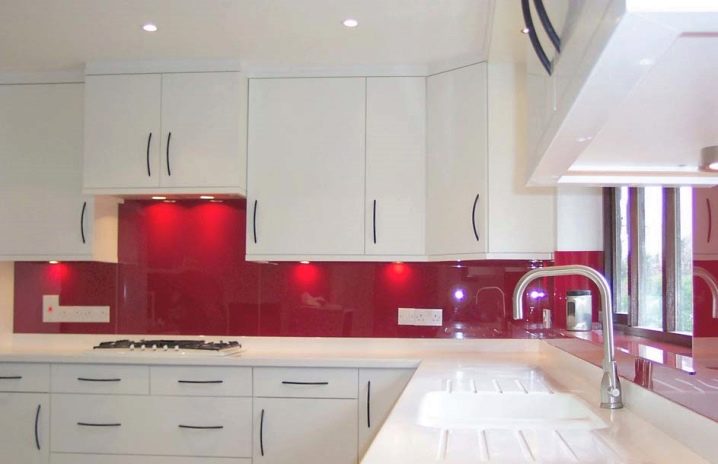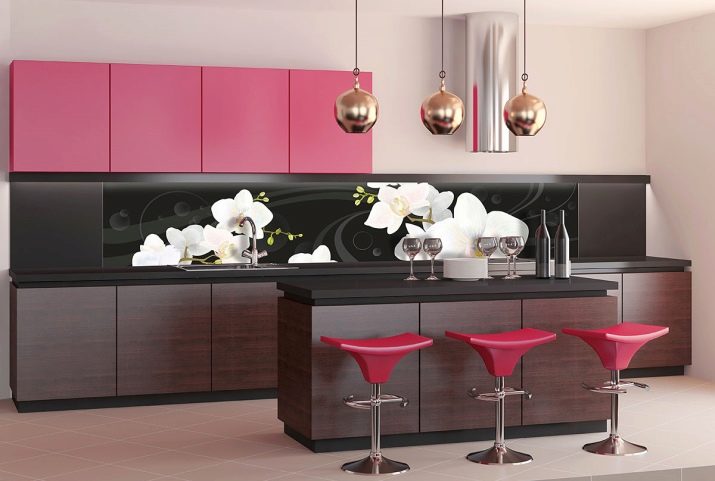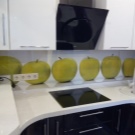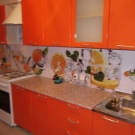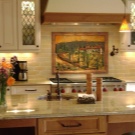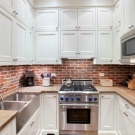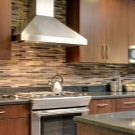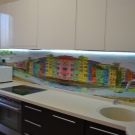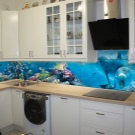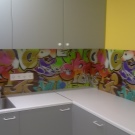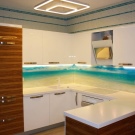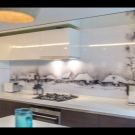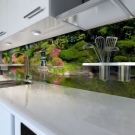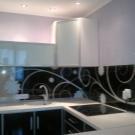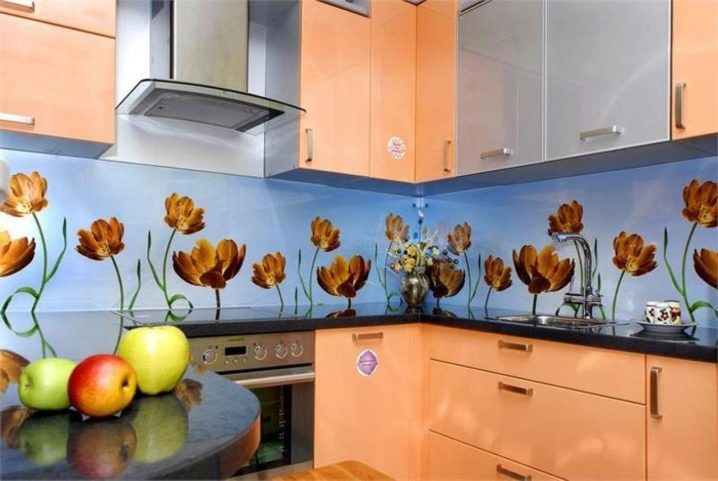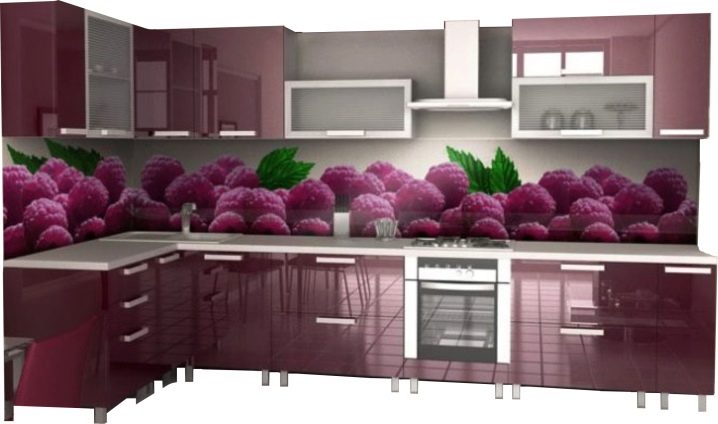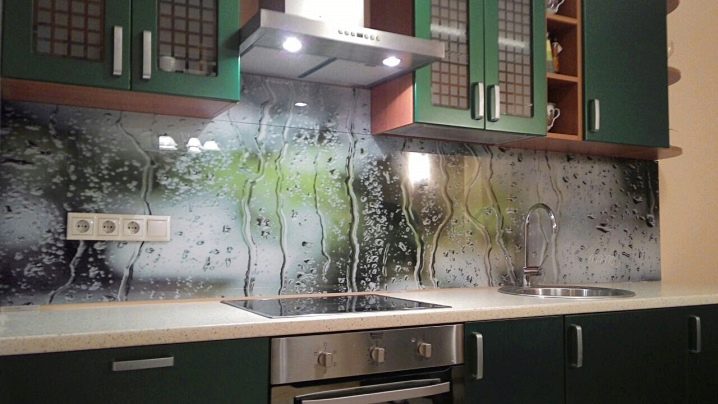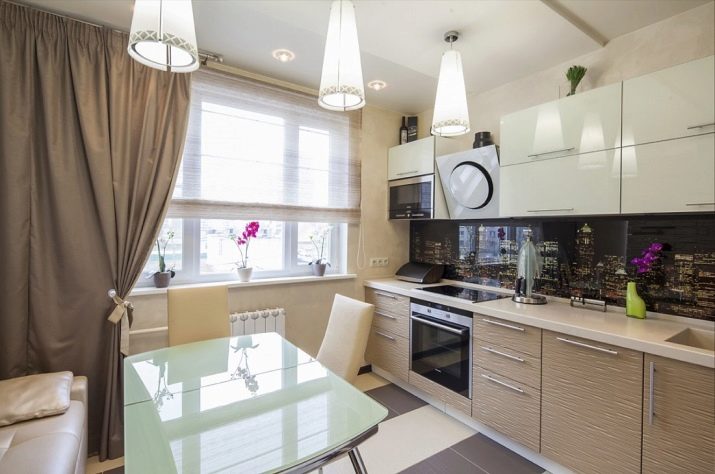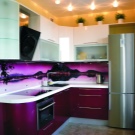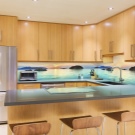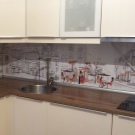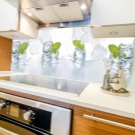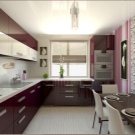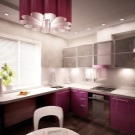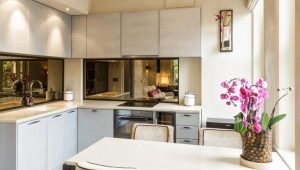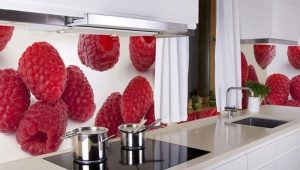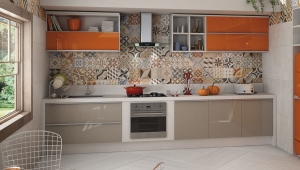Plastic for the kitchen apron
Features and benefits
An apron is a wall surface above worktops. Plastic is often used to finish this area, the material features attract consumers. Plastic kitchen aprons are used to protect the walls near the work area. For the design of the kitchen in this way you do not need special skills, installation is quite simple and quick. Many housewives pay attention to such materials due to their lightness and diversity. In the plastic you can drill holes for fasteners. At the same time, during operation, no cracks or similar damage appear on the surface.
The list of main advantages:
- Plastic is quite affordable and economical material for finishing the wall near the working area.
- Such an inexpensive material will serve you at least 5 years.
- Plastic coating is very aesthetic. Many of them have no seams at all. If the joints are, they are almost invisible.
- It is very easy to install and remove plastic aprons. The walls do not need to be prepared. You can change the decorative element if desired.
- Many companies right in your kitchen will cut the necessary holes for sockets and other communications.
- For plastic, you can hide the wiring. This is especially easy to do if the panels are attached to metal or wooden beams. The design is tight to the wall and can hide its irregularities.
- Color and pattern does not fade with time.
- Caring for a plastic coating is quite simple. Material does not deteriorate from wet cleaning.
- A variety of designs will delight you. Sheets can be glossy or matte, embossed, patterned, photo printing. You can choose products with imitation of natural stone, wood, brick, mosaic or tile.
- PVC wall paneling, wall panels. ABS sheets can withstand temperatures up to 80 ° C.
- The material is lightweight and does not give a load on the wall.
Minor flaws
Any product has flaws, and a plastic apron is no exception. You can make sure that their list is significantly shorter than the list of benefits. Disadvantages:
- Temperatures above + 80 ° C can lead to fire with the release of harmful fumes. That is why the area near the slab is better to cover with glass or other more sustainable material. This is especially true when finishing kitchens with gas stoves.
- Sensitive to mechanical damage. Wash the surface with metal sponges or powders is not worth it. Better use a cloth or a soft sponge.
- PVC surfaces do not tolerate contact with acetone.
- If installed incorrectly, deformation of the material is possible.
Kinds
The type of plastic apron depends on how long it lasts for you, how to care for it and how it will look. The main types of plastic:
ABS
Such a wall apron is famous for its decorative properties. It can be applied to it a variety of images through photo printing. Sheets are sold in the format 3000x600x1.5, as well as 2000x600x1.5. The material is not afraid of fungi and mold. Cost is acceptable. Kitchen apron from such material is convenient, practical.
PVC panels
Such wall panels are produced in the following parameters: a width of 15-50 cm, length is most often 2.6 m, 2.7 m or 3 m, the thickness of the panel is 0.5-1 cm. The thickness and rigidity of the panel affect its cost and durability.Typically, such material is sold with already printed drawings: patterns, stripes, monograms, etc.
PVC wall paneling
The width of the lining varies in the range of 10-12.5 cm, and the length of the products reaches 3 m. In most cases, the material is solid. The most popular samples in pastel colors.
Polycarbonate sheets
Such material may have a glossy or matte surface. Various images are printed on the sheets, including photo printing. Such plastic aprons are the most durable and resistant to high temperatures. Sheets do not have seams. On such a surface, dust, grease and other impurities accumulate less.
Peculiarities of care
Stop your choice on solid plastic. The presence of seams can significantly complicate the cleaning process. Moreover, old fat can accumulate in the joints and spoil the appearance of the working wall. To wash the panels you do not need special detergents or cleaning products. Use warm soapy water and a soft sponge.
It is better to wipe the dirt several times a day. Just wipe the surface. Such a simple procedure will protect your apron from indelible stains.The process itself takes little time, which is very convenient.
Dimensions
The dimensions of the kitchen apron are calculated on the basis of several parameters. The first important parameter is height. Coverage must begin below the headset line. How low is up to you, but experts recommend choosing 1-3 cm. A stove is taken as the main piece of kitchen furniture. Its standard height is 85 cm. From this it follows that the apron should originate at a distance of 94 cm from the floor.
Now you should consider the distance between the lower and upper edge of the coating. If the doors of the upper cabinets are opened by the closers to the top, then the apron should be made low (45-55 cm). In standard kitchens, the height of the apron varies between 47-117 cm (45-115 cm from the worktop to the upper edge).
Materials
Plastic aprons - innovation on the market. Many people acquire such a lining without thinking about the features of the material. Consider the main ones:
- PVC;
- ABS;
- Acrylic glass (polycarbonate).
The popularity of PVC aprons is due to their low cost and attractive appearance. Let's take a closer look at all the advantages that sellers so often talk about.The low cost of the material due to its sensitivity to mechanical damage and the tendency to loss of color. To wash such an apron is really difficult, and it needs to be done immediately. If the stain of fat is absorbed into the surface, then you have to use aggressive detergents. And it will damage the surface.
To install such an apron is really simple, it is done with the help of liquid nails. They make further disassembly difficult. PVC is sensitive to high temperatures. Such an apron can not be installed near the heating surface. Sustainability material is also controversial. When heated, the material begins to emit toxic substances.
ABC aprons are at the tile level, but this option is still cheaper than glass. Plastic has a yellowish color and it is worth considering when buying. Light abrasives can be used for washing, but a metal brush is not suitable for cleaning. The surface is resistant to all chemicals except acetone and solvent. Eco-friendly material quickly changes its color from exposure to light. Quite a wide range of textures will help you to choose something special.
As for polycarbonate, the advantages are more significant, but the cost varies considerably from the two previous materials. Such a panel will not lose its color. If the glass has a thickness of more than 6 mm, then the surface will not be afraid of blows. But scratches on the surface are formed as on any plastic. Acrylic glass does not differ from the usual in its transparency.
Polycarbonate is resistant to high temperatures. This kind of apron can be installed near the stove.
Colors and decor
Manufacturers of kitchen apron made of plastic offer a fairly wide range of products with various design solutions. The choice of color solution depends on many factors: the size of the kitchen, interior, lighting, etc. An apron can perfectly complement the overall style of the room, but the wrong choice can ruin everything. Even if your budget is quite limited, you should not save on this detail. It is this part of the decoration that catches the eye and sets the general tone of the kitchen.
An apron in the same style with a headset should not be in the same color with it at all. It must be in harmony with countertops, appliances or furniture.The main thing that the apron was a logical continuation of the interior. In this case, the apron will not become a key element, but will only continue and support the overall style.
Standard colors are used companions. Green countertops are perfectly combined with yellow panels. Shades of blue are combined with gray tones. But browns are combined with beige shades. Remember that bright aprons visually expand the space and make the room more light.
The opposite option - creating a contrast using the panel. So the apron will attract attention and emphasize the work area. If the kitchen is made in bright colors, then the apron should be pastel color (white, beige, gray and the like). If the overall color of the kitchen is more neutral, then choose a bright color apron. In the latter case, it is worth making a few more nuances in the same color. Such nuances can be curtains, napkins and other textiles.
The apron does not have to be made in one color. Increasingly, the hostess prefer panels with photo printing. You can buy finished products with typical patterns. The style of a brick and other expensive materials is popular.To imitate wood, it is better to choose PVC clapboard. Now many catalogs are full of aprons with flowers (usually orchids) and fruits (orange, apple, etc.).
The photo printing can be made under the individual order. Such a solution will let your imagination roam and create a real work of art in the kitchen. To date, many companies offer this service. You can choose any image or photo as a picture. By giving preference to photo printing, you can complement the entire kitchen interior with similar prints.
Look good in the kitchen landscapes, marine themes, natural motifs. Bolder owners must pay attention to abstractions. Look good panels orange. This shade will lift your spirits and add joy, improve your appetite.
How to choose
ABS plastic is the most common material. Plastic and durable material allows you to create an imitation of any surface. Modern technologies have made it possible to make plastic resistant to moisture and heat. It is easy to care for such an apron - it is enough to periodically wipe the surface with a damp cloth or a soft sponge.A variety of colors and textures of the ABS will allow you to choose an appropriate copy of the style.
Glossy plastic surface reflects light. This creates the effect of extra space. Matte panels are able to create a special mysterious atmosphere. Choose clear plastic to create a special volume.
In the small-sized kitchen pick up a bright apron, it is able to visually expand the boundaries of the room. For a kitchen set in bright colors, pick up a dark apron and play on the contrast. To create a classic design, select panels with imitation bricks, wood or any other natural material. The patterned apron is more practical. On it insignificant pollution will be less noticeable.
Kitchen aprons with photo printing have a wide range. There are models with 3D printing. Pick a picture so that it fits with the kitchen set. With the help of manufacturers' catalogs, you can familiarize yourself with the most popular options and estimate them to your kitchen.
The most reliable and expensive example of plastic aprons is polycarbonate glass. It combines the reliability and durability of the metal and an attractive type of glass.3D printing on such panels looks especially elegant and attractive.
The plastic sheet should be 1-3 cm larger than the working surface of the wall. So you can hide the edges behind the furniture, and the view will be more neat and complete. Especially carefully study the characteristics of plastic, if you intend to install it near the stove, the cooking surface. Pick up a protective border in the tone of an apron. Such a simple device will protect you from moisture ingress behind the countertops.
DIY installation and installation
In order to install an apron made of plastic, you should go through three simple steps yourself:
- First you need to decide on the size. Remember that the apron should be 1-3 cm below the table tops. But there are no special requirements for height. You can install an apron that will not reach the top of the headset. In this case, you should decorate the place of transition. The main thing that the working wall was protected from moisture and dirt.
- Cut the panels need with a hacksaw with small teeth. Some models are cut with an ordinary cutter, but there are not many of them. Cut out the plastic should be based on the overall design of the apron.
- The final stage is fixation. For this purpose, choose one of three ways:
- It will be quick and easy to glue the panels with liquid nails. The glue is applied to the wall and panel, between the glue strips should be about 15 cm. Apply the glue substance to the base: primer, leveling, plaster, after drying, primer again. Such preparation of the wall is necessary for better adhesion of surfaces.
Despite the fact that this method of fastening is the easiest and fastest, there is a significant drawback - it will be difficult to dismantle the apron. First, you need to warm up the plastic panel with a building hair dryer. After removing the panel, remove residual liquid nails from the wall.
- PVC apron can be fixed with screws. Screws screwed into the corners of the apron.
- With the help of metal profiles can be made removable design. With the help of screws you need to fasten metal strips. This decision will allow to change the apron without damage to the wall and with minimal time costs.
Reviews
Impressions of buyers are quite contradictory. Before installing such a panel, you must be familiar with all the features of the material. This is the advice that consumers give.With proper installation and maintenance of the apron is able to serve more than five years.
Buyers recommend removing stains and dirt immediately after they appear. Otherwise, the fat can be absorbed and you will no longer wash it. The modest price allows you to change the apron on a whim, which pleases women. The wide popularity of plastic aprons speaks about their quality.
Buyers named the main drawback of plastic panels - they are highly prone to scratches. That is why it is quite difficult to use the same aprons for five years. But an acceptable cost slightly smoothes the impression of this shortcoming.
Interesting solutions in interior design
Plastic aprons are relevant for the design of kitchens in modern styles: minimalism, modern, hi-tech, techno, futurism and the like. For inspiration, check out these interesting examples.
